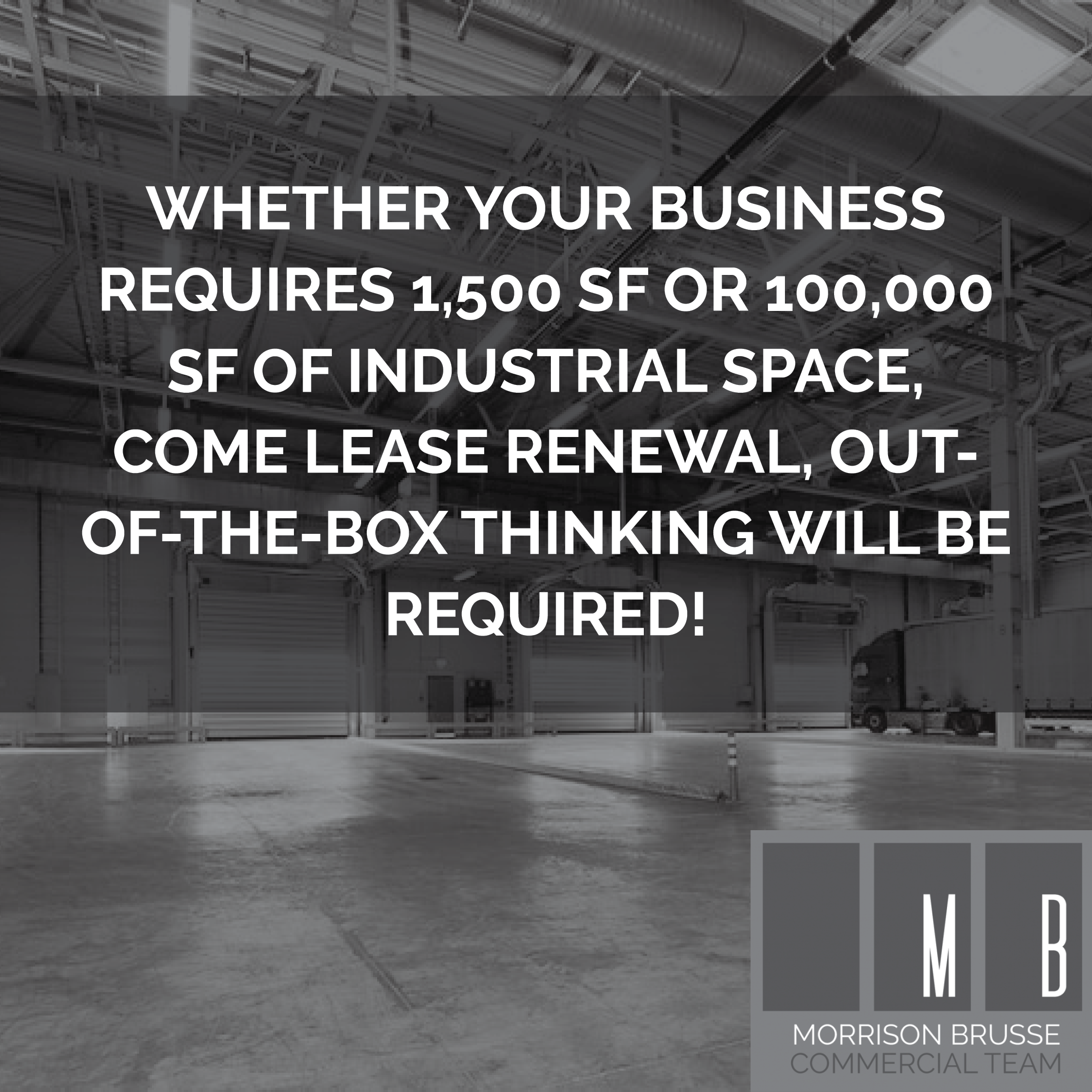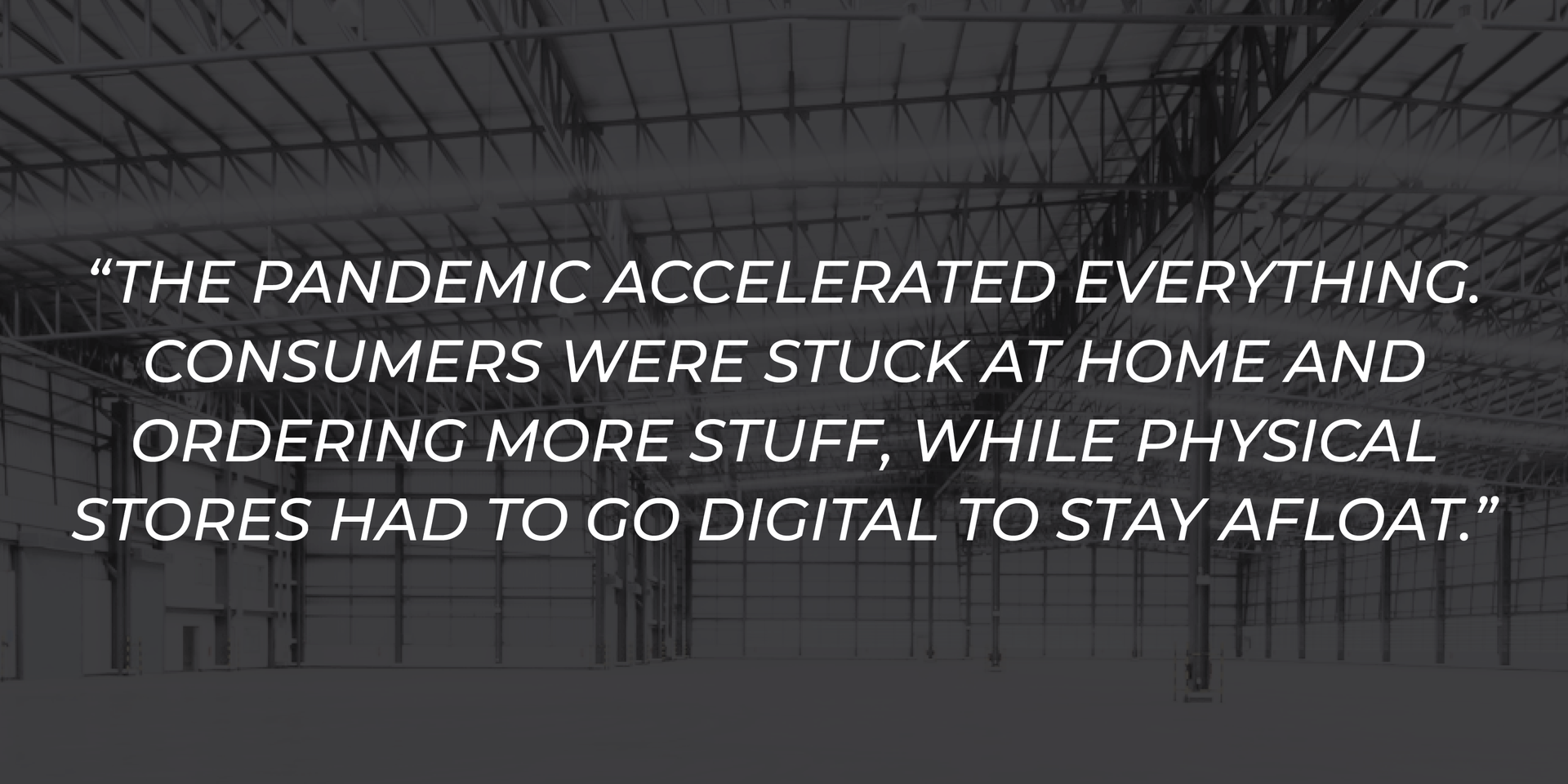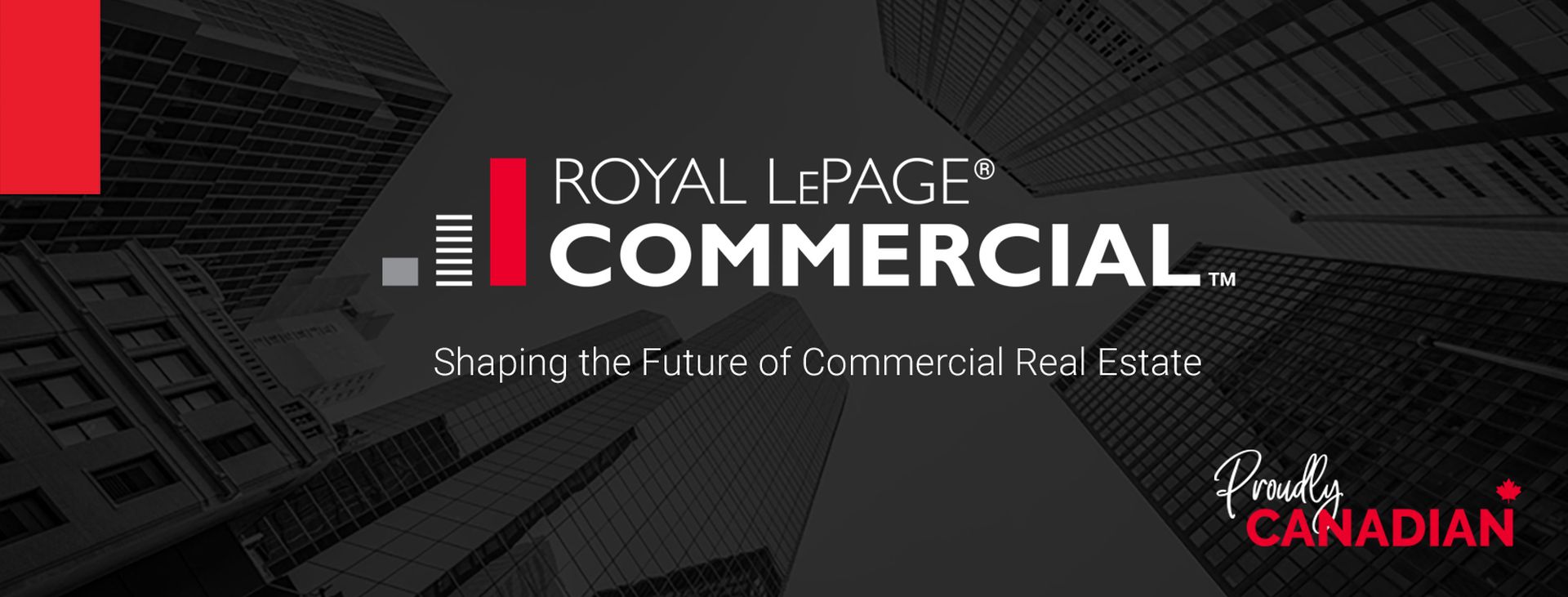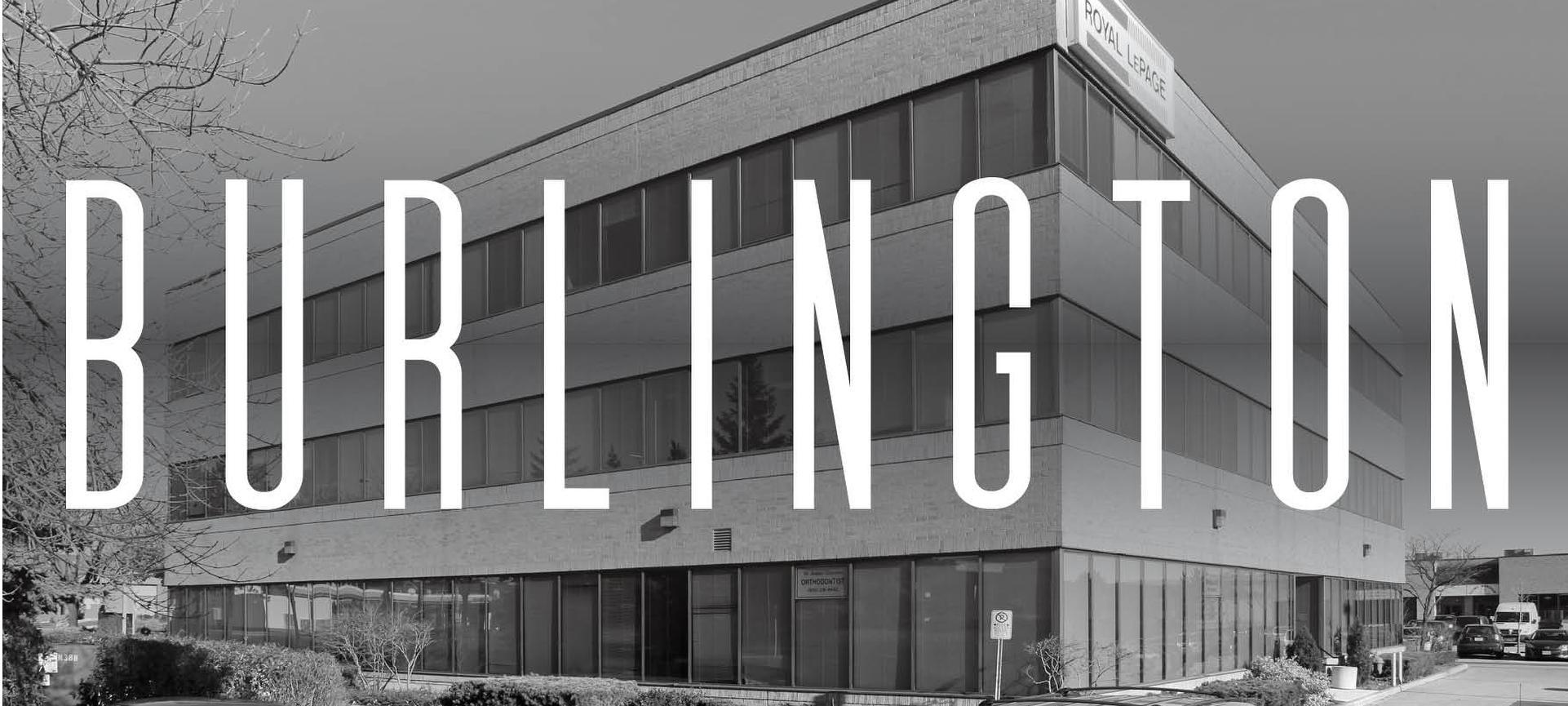Blog
What Q3's Stable CRE Market Means for Your Business
If you're a business owner trying to make sense of today's commercial real estate market, here's the good news: stability is returning.
The Market is Finding Its Footing
Recent analysis shows Canadian commercial real estate values held remarkably steady in Q3 2025, dipping just 0.03%. After years of uncertainty, this stability signals that the market is weathering economic headwinds better than many expected.
For business owners, this means the volatility that made space planning so challenging over the past few years is beginning to ease.
What This Means for Different Business Types
Retail-Based Businesses: If you're in retail, particularly food-related, you're in the strongest position. Grocery-anchored retail centers are seeing the highest value gains and strong demand. However, landlords still have limited inventory, so moving quickly on quality spaces remains important.
Industrial & Distribution: If you operate warehouses or distribution facilities, you may have more negotiating power than you've had in years. With vacancy rates rising and landlords offering concessions like free rent periods, it's increasingly a tenant's market. Industrial fundamentals are expected to improve through 2026, but near-term opportunities exist for smart operators.
Office Users: The office market remains bifurcated. If you need Class A space, act now—vacancy rates in premium buildings have dropped below 2% in major markets. However, if you're flexible on building class, you may find better deals as landlords of Class B properties work harder to fill space.
The West GTA Advantage
While Toronto and Vancouver face tighter supply constraints, the West GTA continues to offer more options and better value for growing businesses. The key is understanding that while the broader market is stable, individual property types are experiencing very different conditions.
Looking Ahead to 2026
Economic uncertainty remains—84% of GTA residents report being affected by tariffs, and consumer spending concerns are real. However, experts expect increased transaction activity and more clarity on market pricing in 2026 as investors move off the sidelines.
The Bottom Line
If you're considering a move, expansion, or lease renewal, this stable period creates opportunities. Landlord negotiations are more favorable in industrial and some office segments, while retail spaces remain competitive.
The market is no longer in freefall, but it's not racing ahead either. That middle ground is exactly where strategic decisions happen.
Ready to explore your options in the market? Lucie and Julie at The Space Advisors help small to medium businesses navigate market complexity to find spaces that support growth. Let's talk about what this market means for your specific needs.
Types of Commercial Leases: A Simple Guide to Understanding Your Options
Choosing the right commercial lease for your business is one of those decisions that can either set you up for success or leave you with unexpected costs down the road. The good news? Once you understand the basics, it's not as complicated as it seems.
Let's break down the most common lease types in Canada and help you figure out which one makes sense for your business.
The Big Three: Gross, Net, and Modified Gross Leases
Gross Lease (Full-Service Lease)
What it is: You pay one predictable monthly amount, and your landlord takes care of the rest—property taxes, insurance, maintenance, utilities, and common area upkeep.
Best for: Businesses that want simplicity and predictable expenses. This is popular in multi-tenant office buildings and smaller retail spaces across Toronto, Vancouver, and Montreal.
The catch: Your base rent will be higher because the landlord is absorbing the risk of rising operating costs. Many gross leases include annual rent increases tied to inflation or a fixed percentage.
Net Lease
What it is: You pay a lower base rent, but you're also responsible for some (or all) of the property's operating expenses. Net leases come in three flavors:
Single Net (N): Base rent + property taxes
Double Net (NN): Base rent + property taxes + insurance
Triple Net (NNN): Base rent + property taxes + insurance + maintenance
Best for: Industrial properties and larger retail tenants who want more control over their operating expenses.
The catch: While your base rent is lower, your total monthly costs can fluctuate. You'll need to budget carefully and stay on top of maintenance responsibilities.
Modified Gross Lease
What it is: The happy medium. You pay a fixed base rent and split certain operating expenses with your landlord. Typically, the landlord covers major expenses like property taxes and building insurance, while you handle utilities and janitorial services.
Best for: Office and industrial spaces where you want some predictability without giving up all control.
The catch: The devil is in the details. Make sure you understand exactly which expenses you're responsible for before signing.
Triple Net Plus (Absolute Net Lease)
This is the triple net lease on steroids. You're responsible for everything, including major structural repairs. In exchange, you get the lowest possible base rent. This requires serious financial planning and isn't for the faint of heart.
Land Lease (Ground Lease)
You lease just the land and build your own structure on it. These are long-term commitments where you handle all development and operating expenses. Think of it as renting the foundation for your business empire.
So, Which Lease Type Is Right for You?
The answer depends on three things:
Your budget and cash flow: Can you handle variable costs, or do you need predictability?
Your operational capacity: Do you have the resources to manage property expenses and maintenance?
Your long-term plans: How long do you plan to stay, and how much control do you want?
The Bottom Line
Understanding your lease structure isn't just about knowing what you'll pay each month—it directly impacts your business's financial health and flexibility. The wrong lease type can strain your cash flow, while the right one can give you the stability or control you need to grow.
Ready to find the perfect space for your business? At The Space Advisors, we help business owners and leaders navigate commercial real estate decisions with confidence. Whether you're leasing your first office or expanding into multiple locations, we'll make sure you understand your options and negotiate terms that work for your business.
Let's find your ideal space.
It’s Not the Office — It’s the Commute.
Why Demand for Suburban Workspaces Is Rising
Let’s set the record straight: people don’t hate the office — they hate the commute.
That’s what we’re hearing from business owners, team leaders, and talent across the board. It’s not about rejecting in-person work. It’s about pushing back against time lost in traffic, unpredictable commutes, and the stress of getting downtown.
And that’s exactly why we’re seeing a renewed push for suburban office space.
What’s Driving the Shift?
1. Closer to where people live.
Suburban offices cut commute times. Period. For small and mid-size businesses trying to retain top talent, that’s a game changer.
2. Flexibility.
More parking, easier access, and layouts tailored to hybrid work make suburban sites far more adaptable.
3. Cost.
Lease rates and operating costs are typically lower than downtown — with fewer surprises.
4. Quality of life.
Proximity to home, schools, gyms, and local services means happier, more productive teams.
What This Means for Your Business
As advisors who work closely with successful businesses, we know that your space decisions need to be strategic — not just based on location, but on what works for your people and your bottom line.
If your team is spending more time commuting than collaborating, it might be time to rethink your footprint. A well-located office could offer the right mix of access, flexibility, and value.
We help clients:
- Explore location options that attract and retain talent
- Right-size office footprints for hybrid models
- Negotiate lease terms that support growth, not limit it
If you're rethinking your office strategy, we’re here to help.
Lucie Brusse & Julie Jones
The Space Advisors | Commercial Real Estate Sales & Leasing


What's impacting the CRE market? - September 2025
Canada commercial real estate market insights & indicators
Why the health of commercial real estate matters to your business, your property decisions, and the development landscape in the GTA and beyond.
You may think commercial real estate is “just buildings,” but it’s far more: it’s a powerful engine behind jobs, investment, community vitality — and increasingly, policy pressures and economic headwinds. That’s the clear message from recent research by Altus Group on Canada’s CRE sector.
As local advisors in the Western GTA, we believe it’s essential for business owners, property owners, and community leaders here to understand how macro forces in CRE ripple down to Burlington and surrounding markets. In this post, we’ll break down the key themes in the research and offer you actionable insights for your investment, leasing, or occupancy decisions.
1. CRE’s Big Economic Role — And Why It Matters to You
Jobs & GDP impact: The CRE sector supports over one million jobs nationwide, generating nearly CAD 200 billion in GDP. That’s comparable to Canada’s energy sector. Altus Group
Three channels of impact: CRE drives employment directly (developers, brokerage, property management), indirectly (steel, architects, legal, engineering), and through induced effects (when CRE sector employees spend locally). Altus Group
Local relevance: In Burlington and the broader West GTA, healthy CRE translates into thriving business districts, better retail foot traffic, and more incentive to invest in infrastructure and amenities.
So, when you lease, buy, or develop commercial space, you're not just thinking about your own return — you're part of the ecosystem that supports jobs and investment locally.
2. Headwinds & Stress Points You Should Know
A. Slowing Population & Labour Pressure
Canada’s population growth has decelerated sharply, and federal policy changes to permit rules may push near-term growth close to zero.
Fewer new “warm bodies” hitting the labour force means constraints in filling roles, slower housing demand, and dampened consumer/patron activity for retail or office tenants.
For you: in selecting tenants, lease metrics and occupancy forecasts should increasingly factor in slower demographic growth. You may need to be more conservative with assumptions.
B. Policy & Trade Uncertainty
Disruptive rhetoric around protectionism and shifting trade policy has already caused firms to scale back investment, build inventory buffers, or postpone expansion plans.
On the domestic front, zoning rules, approval delays, and rigid planning frameworks are cited as bottlenecks for redevelopments, conversions, and new CRE investment.
For you: stay close to municipal planning changes, regulatory updates, and policy signals. If an older office or commercial property in Burlington can be adaptively reused (e.g. mixed use, creative office, retail + residential), the ability to navigate approvals may become a differentiator in value.
C. Sector-Specific Pressures
Office: Perhaps the toughest challenge — high vacancies, functional obsolescence (older office stock not suited for modern layouts), and downward absorption. Altus Group
Industrial / logistics / data / cold storage: Among the brighter spots. Demand remains relatively strong, particularly for niche and modern product.
Retail & multifamily: Mixed signals. Retail spending has held better than expected, but slower population growth is a risk. Multifamily continues to see institutional interest, though financing is more challenging.
Commercial real estate is much more than bricks and mortar — it powers jobs, investment, and community dynamism. But it’s a sector under pressure, facing demographic shifts, policy uncertainty, and structural changes, especially in the office space.
As your local CRE partners in Burlington / West GTA, our commitment is to help you anticipate these trends, make informed decisions, and position your assets or businesses for success. Let us help you translate this macro picture into your next lease, purchase, or development strategy.
Want a deeper dive into your sub-market or specific property class? Just reach out — we’re here to walk through it with you.
Real estate investment surges to record with Canada rebounding

Canada saw record investment in commercial properties in the second quarter as the easing of the COVID-19 pandemic pushed buyers and sellers off the sidelines.
Source: https://tinyurl.com/4jjabxbf
With the country’s economy rebounding, $14 billion (US$11 billion) worth of commercial real estate changed hands in the three-month period, a 29 per cent increase over the previous quarter, according to a report Monday from commercial brokerage CBRE Group Inc. Investors targeted apartment buildings and warehouses, driving a surge of deals that has Canada on pace to post nearly $50 billion in commercial real estate investment this year. That would be a new annual record, according to the report. “Capital can’t remain on the sidelines forever -- it has to be deployed and put to work at some point,” Paul Morassutti, vice chairman of CBRE’s Canadian business, said in a telephone interview. “Over the last two quarters, there has been a very strong sense that we are at least getting close to some degree of normalcy.”
Even as vaccinations give Canada’s economy a boost, commercial real estate investors continued to gravitate to properties that have been resilient during the pandemic. Warehouses have been popular because of the e-commerce boom. Apartments, long considered dependable assets, have gotten a boost in recent months as surging home prices shut out many would-be buyers. While retail and office buildings saw renewed interest in the second quarter, Canadian investment in those properties lagged behind other corners of the market. “For a lot of investors out there, there was a desire to rotate out of retail and office investments, where there are bigger question marks over those asset classes,” Morassutti said. The CBRE report focused on transactions for individual buildings, leaving out mergers where entire companies change hands. Even with those deals factored in, last quarter’s torrent of investment was enough to make it the third-busiest on record, the CBRE report said.
Predictions for Canada’s Economic and Commercial Real Estate Outlook for 2023
As we charge forward into 2023, continuing the path post pandemic, we look at how we see 2023 unfolding for the Canadian Commercial Real Estate market. While we don't have a crystal ball, we look at some of the key fundamentals to look at what could be in store for us in CRE.
1.Canadian Economy Slips into Recession
Canada’s economic downturn may be deeper than expected resulting from excessive household debt.
The base case scenario for Canada’s economic outlook in 2023 is for a recession owing to a
moderate contraction of real GDP growth. The downturn will largely be driven by the household sector
as higher interest rates and inflation continue to erode the purchasing power of consumers.
However, an even longer and deeper recession is a growing risk should aggressive interest rate hikes
by the central bank ultimately break the back of highly indebted consumers and worsen a housing correction
that is already underway.
2. Monetary Policy Will Pivot
A deceleration of inflation will allow the Bank of Canada to cut rates over the second half of 2023.
Due mostly to a let up in global supply chain pressures and the limited threat of a wage price
spiral, inflation has likely peaked and could return to the target level of 2% by as early as spring
2023. With the economy facing a potentially deeper and longer recession, a door will open for the
Bank of Canada to pivot to a less restrictive monetary policy which could include interest rates
cuts over the second half of the year.
3. Industrial Cap Rates Will Hold Firm
Despite higher interest rates and slim going in yield spreads, industrial cap rates will hold steady and could even compress further.
Strong investment demand for industrial has pushed cap rates for this property type to all-time lows
in 2022. Although interest rates have moved significantly higher over the past year and yield spreads
with risk free bonds are razor thin, the expectation for strong income growth through better than
inflation net rental growth is likely to keep investor demand strong for this product amidst limited
product coming to market. As a result, cap rates should hold steady through the course of the year
and could even compress further should there be a material easing of interest rates.
4. Industrial Will Continue to See Outsized Rental Rate Growth
A persistent undersupply of product suggests that industrial rental rates will continue to grow faster than the rate of inflation.
Continued strong demand from logistics, e-commerce and retail tenants looking for space to
facilitate their just-in-time inventories in tandem with lagging new supply will continue to drive
better than inflation net rent growth. This will be especially true in markets such as the Greater
Toronto Area (GTA) where new supply faces persistent development hurdles and in Montreal, where
average net rents still appear to be under market. Industrial demand is also likely to continue
spilling over into previously non-traditional distribution markets in the Greater Golden Horseshoe.
5. Hybrid Work Drives a Flight to Quality in Toronto’s Downtown Office Market
Submarkets with newer product will continue to poach tenant demand from traditional office nodes such as the Financial Core.
The growing adoption of hybrid work will continue to increase demand for modern office buildings
with flexible workspaces and attractive amenities. As a result, office nodes with newer product
such as the Downtown South Core in Toronto will continue to poach demand from traditional office
nodes such as the Financial Core, where older buildings and floorplates are not conducive enough
to attract talent when workers do come to the office. As demand migrates and the recession
deepens, some tenants will also take the opportunity to reduce their office footprints thereby
accelerating an increase in overall office availability.
6. Retail Resilience Will be Tested
Pent-up demand driving consumer spending will be exhausted which will constrain the recovery in retail leasing volumes.
As consumers draw down the stockpile of savings they accumulated during the pandemic and
simultaneously see their purchasing power weaken from higher interest rates and inflation, a
sharp pullback in retail spending is expected to occur in 2023. The pullback will come just as
the retail sector was regaining leasing momentum following the impact of pandemic-related
restrictions and lockdowns. As a result, some retail centres, particularly enclosed centres such
as malls, could face another round of challenges to keep tenants in place.
Lucie Brusse & Paul Morrison

WALL STREET BETS AGAINST THE OFFICE SECTOR
As the effects of the pandemic fade and future lockdowns are seemingly unlikely, many businesses have begun to ask their workers to return to the office.
As of today, more workers are back at their desks than a year ago, so things must be getting better – Right?
They are, in fact, getting worse.
Office landlords are now faced with businesses forced to accept hybrid work from their employees, businesses that are laying off employees, and higher interest rates. This has resulted in tenants asking for reduced square footage as their leases come up for renewal.
As a sign of what investors think of the office rental market, Wall Street has the shares of all the largest landlords trading at pandemic levels or lower. This is significantly lower than the market as a whole. Basically, investors are betting that the office market is going into a major slump.
Some office buildings will not come through this. Newer office buildings offer greater ability to re-shape with larger floor plates, for example. They can easily adapt to the physical and mental health of the next generation of occupants where these are a priority for them. Better air quality, natural light, multiple accesses, and large spaces for social distancing as well as up-to-date technology that allows for “touchless” journeys throughout the building allow buildings to adapt to “office live after the pandemic”.
Newer buildings also offer better micro-mobility (bikes & scooters) and on-site amenities such as package & food delivery reception, showers, gyms, coffee shops, and private sitting areas.
Older buildings are liable to face serious issues. Borrowing and construction costs are too high to upgrade, so many are simply becoming obsolete. As values for their properties decline, landlords are liable to have to make tough decisions. Owners, smart enough to have paid off their loans might have a chance to repurpose their buildings into residential complexes or storage facilities.
As an interesting note, while much of the discussion has been focused on urban/downtown office markets, suburban office demand has performed comparatively better than its urban counterpart. Less dense suburban locations, along with home offices and coworking spaces may increasingly become part of a more distributed office model. This is because employers look to increase the flexibility of how their employees can work.
Suburban offices offer workers the perfect hybrid situation where they can work from home and walk from home to the office. This is the convenience factor for both the employee and employer!
Lucie Brusse and Paul Morrison
Artisan Space - The Cotton Factory has it figured out
Empty offices are keeping people away, not fear of Covid.
As more and more people are making their way back into the office, they are facing a new challenge – empty seats.
Workers who have hailed the call of their bosses to “get back into the office for teamwork, creativity, and better outputs” are braving gas prices, parking, and/or the dreaded public transit – all with the goal of wanting to see people instead of zoom calls.
When they arrive at the office they are having coffee alone, sitting alone, and doing zoom calls with their co-workers who are at home – talk about “Lunchbag Letdown”!
Bosses are a bit at fault here as many owners and managers have been selling this “back to the office” without a real idea of how it will work and how to manage it.
The worst thing is for employees who need that “office” community and lifestyle who are alone. They might come in on a Monday while others come in on a Tuesday, Wednesday, or Thursday. There has to be a schedule to ensure that people are back at the same time.
The Cotton Factory in Hamilton, Ontario provides its tenants with a “Building Community” that allows the businesses in the building to provide that “community” to their workers. From shared coffee stations, eating rooms, meeting rooms, and events – The Cotton Factory allows businesses to extend this “community” to each of their workers so they never feel alone or isolated – even if their own co-workers are still at home.
“Our CoWork space features an abundance of natural light…….Built to inspire creativity, collaboration, and community……We’ve worked hard to create a culture that inspires focus, cultivates and fosters connections, generates referrals, and drives success”.
Scan the QR Code on header to take an informational tour of the Cotton Factory
Or reach out to us directly to view brochure;
Lucie Brusse and Paul Morrison.


Is Commercial Real Estate The Next Target For Hackers?
Can that smart HVAC system you put into your building to save energy and costs be an open door for IT hackers?
Building owners have not had to deal with Cybercrime like financial and large retail stores have. However, that is all changing as more and more buildings adopt smart technology. Many building owners are still, today unprepared for any attacks that might target them.
There are three (3) things that these owners can do to better prepare themselves to handle such attacks:
- Accept that they are at risk and understand what that risk entails
- Have comprehensive cyber insurance to protect against catastrophic loss, and
- Make sure they are in compliance with all cyber insurance requirements
The kind of attacks that building owners must be concerned about center around the operational areas of their building such as HVAC, lighting, smart controllers as well as any and all smart technology. The attackers enter through these, usually unprotected web connected systems, and make their way into the central hub and then into the IT systems.
Imagine hackers holding a building’s elevators, heating systems, lighting or any other elements hostage because they control the buildings network – has it happened yet? If has it would not be in a buildings interest to let their tenants or public know.
If it hasn’t happened, it most certainly will. Building owners may not want to deal with this issue but, unfortunately it simply isn’t going to go away. As more buildings implement smart technology the more attractive these sectors will become to Hackers.
The most important thing building owners can do to protect themselves is to get a consultant who understands these kinds of threats and can help to ensure the building has the right kind of insurance and that the building meets all compliance as stated in the insurance policy. Any building who does not have cybersecurity insurance is taking a risk. It should be clear that buildings with cybersecurity insurance who are not in compliance with their policies are taking the same risk.
Basically, get the insurance and make sure the building is compliant with all requirements of the policy. Policies may include inadequacies depending on the specifics of coverage, which could leave a business exposed depending on the origin of the threat and the type and degree of applied security.
Lucie Brusse | luciebrusse@royallepagecommercial.com
Paul Morrison | paulmorrison@royallepagecommercial.com
GTA CRE Registers a 40% Increase in Transaction Dollars in Q1 2022 Compared to Q1 2021
Strong investor demand, a lack of inventory and low borrowing costs have fueled the Toronto commercial real estate market.
823 transactions resulting in $9.3 billion were registered in Q1 2022 compared to $6.7 billion in Q1 2021(1). Despite a disastrous 2020 and 2021, the office market has shown some encouraging signs with $1.9 billion recorded in that quarter, becoming the highest quarter the office sector has seen since 2015, a far cry from a mere $700 million in office sales in Q1 2021.
The industrial sector continues to linger at record low levels in the GTA. $1.6 billion in sales were recorded, up 10% from Q1 2021. You might think 10% doesn’t seem a significant increase as compared to office, but the industrial sector simply doesn’t have the supply to record higher numbers whereas the office sector does.
With the continued global supply train issues and ensuing increase in transportation costs, manufacturers are keeping production local thus driving up demand for cold storage, warehousing, and other industrial usages – it is doubtful there will be a cooling off period for the industrial sector in the next quarter.
According to Altus all asset classes (except the hotel sector) in 2022 have started off strong and are still highly desirable by both investors and end-users. According to that same survey the Toronto market is the most preferred geographical area for assets followed by Vancouver, Montreal, and Ottawa. Of particular interest in the Toronto market were food anchored retail strips and industrial land.

HYBRID WORKING IS HERE TO STAY
Employers in Canada will need to consider not only how and when to bring their employees back to work, but also whether they should.
Over the last two years, the pandemic has given many workers time back in their days, by eliminating their commute. Many aren’t willing to give that up entirely. "The No. 1 reason employees prefer hybrid work is to avoid commute time," Gallup said in their report. "People are not in a hurry to add back the time it takes to get ready for work, travel to the office and return home every day."
A PwC study released in 2021 found that only 15% of Canadian workers wanted to work entirely from home, with another 18% looking to work entirely in the office. The remaining 67% of workers were looking for some compromise, with 25% of the 2,000 employees surveyed looking for an equal split of work at the office and home.
As we expect to see office vacancy rates climb in the coming years, our clients wonder if this will mean lower rates on their lease renewals or new leases.
We expect it will take some time to see lease rates drop. Reason being, dropping lease rates equal a building’s valuation dropping. Rather than lowering rates, we expect to negotiate more tenant incentives and free rent.
This gives the Tenant a lower overall rent expense, and the Landlord keeps their building value intact.
With so much still in question on where we will land moving out of the pandemic, it is incredibly important to have time and strategy when negotiating a new lease or renewal.


For years, Industrial classed commercial real estate has seen gradual growth in the cost per square foot, allowing tenants a “comfortable” increase at lease renewal – Not anymore! Business Owners are seeing their profit margins significantly effected by their leasing costs.
Why is this? Part of the answer is location. Up until now, Industrial real estate was primarily built in the suburbs surrounding major cities, with tracts of land easily and affordably attained. Now, decades later, the cost of that land has skyrocketed and so has the industrial lease rates.
Covid had nothing to do with that, it was already happening. The pandemic did exacerbate the problem by compressing vacancy further, thus pushing rates even higher.

Vacancy rates from Vancouver to Toronto to Montreal (and everywhere in between) are hovering around 1.5%; A vacancy rate that puts landlords in the driver’s seat – and they are hitting the gas pedal.
You might be thinking that this is a dream come true for a commercial real estate agent. Quite the opposite, as higher prices with little to no vacancy means there are no readily available solutions for our clients. We are unable to provide them with better options and better rates because they simply do not exist, and that, is our worst nightmare.
We really have to put on our creative thinking cap and work together with our clients to strategize a solution which can include anything from purchasing a church and converting it into industrial space to outsourcing their warehousing and move to an office space for their operations. We, as commercial real estate advisors have had to become almost like business advisors as we look at the whole of a clients business and see if we can come up with “out-of-the-box” solutions to make their business fit to the realities of real estate availability and costs.
Outsourcing warehousing to a third party may have been a “no-go” years ago but today it is a viable option for consideration as it solves two of the biggest issues facing some businesses today:
Cost of space
Cost of staff
Cost of location (proximity to transportation and workforce)
With outsourcing warehousing, business owners don’t have to staff it, operate it, insure it or ship it. These are secondary savings that flow from the primary savings on lease costs. With costs increasing across the board and shipping expectations shorter, outsourcing this portion isn’t so “out there”, it might just make good business sense.
This is but one example of how creative business owners and commercial real estate agents must become to meet the challenges we all face today. Whether it’s outsourcing, looking for new ways to re-purpose underutilized space or building multi-floor industrial, never before have we needed to re-think what we see as industrial space.
For a deeper dive into some of the options that may exist, take a look at these two articles, and then let’s talk.
Rents rise amid demand for fulfillment space
How the demand for warehouse space is pushing industrial real estate into new territory





